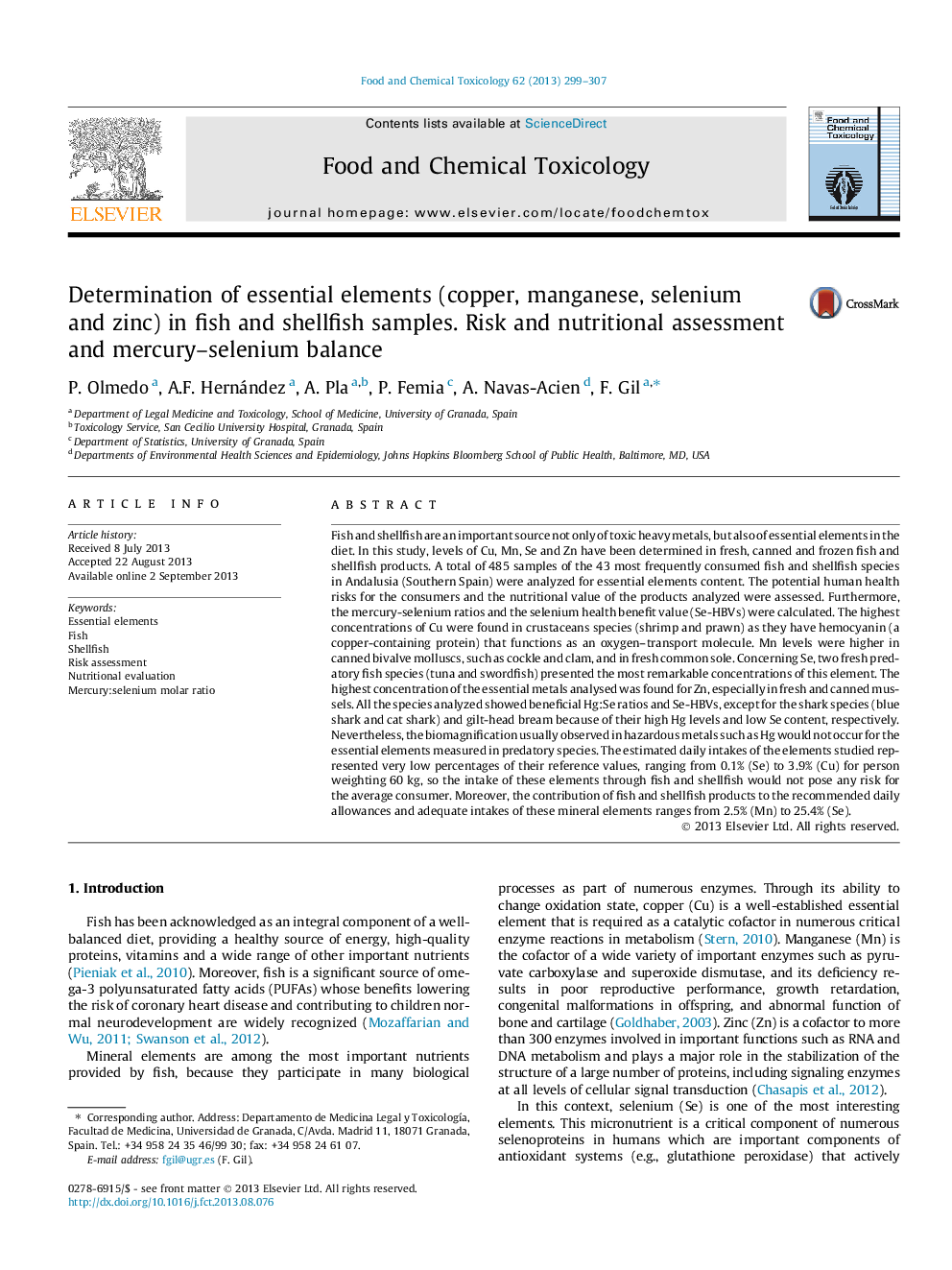| کد مقاله | کد نشریه | سال انتشار | مقاله انگلیسی | نسخه تمام متن |
|---|---|---|---|---|
| 5850350 | 1561782 | 2013 | 9 صفحه PDF | دانلود رایگان |

- Cu, Mn, Se and Zn levels were analyzed in seafood sold in Andalusia (South Spain).
- Levels found in fish and shellfish are comparable to those in scientific literature.
- The calculated intakes of these elements are below toxicity reference values.
- Fish and shellfish analyzed provide a moderate amount of essential elements to diet.
- Shark species have unfavourable Hg:Se molar ratios.
Fish and shellfish are an important source not only of toxic heavy metals, but also of essential elements in the diet. In this study, levels of Cu, Mn, Se and Zn have been determined in fresh, canned and frozen fish and shellfish products. A total of 485 samples of the 43 most frequently consumed fish and shellfish species in Andalusia (Southern Spain) were analyzed for essential elements content. The potential human health risks for the consumers and the nutritional value of the products analyzed were assessed. Furthermore, the mercury-selenium ratios and the selenium health benefit value (Se-HBVs) were calculated. The highest concentrations of Cu were found in crustaceans species (shrimp and prawn) as they have hemocyanin (a copper-containing protein) that functions as an oxygen-transport molecule. Mn levels were higher in canned bivalve molluscs, such as cockle and clam, and in fresh common sole. Concerning Se, two fresh predatory fish species (tuna and swordfish) presented the most remarkable concentrations of this element. The highest concentration of the essential metals analysed was found for Zn, especially in fresh and canned mussels. All the species analyzed showed beneficial Hg:Se ratios and Se-HBVs, except for the shark species (blue shark and cat shark) and gilt-head bream because of their high Hg levels and low Se content, respectively. Nevertheless, the biomagnification usually observed in hazardous metals such as Hg would not occur for the essential elements measured in predatory species. The estimated daily intakes of the elements studied represented very low percentages of their reference values, ranging from 0.1% (Se) to 3.9% (Cu) for person weighting 60 kg, so the intake of these elements through fish and shellfish would not pose any risk for the average consumer. Moreover, the contribution of fish and shellfish products to the recommended daily allowances and adequate intakes of these mineral elements ranges from 2.5% (Mn) to 25.4% (Se).
Journal: Food and Chemical Toxicology - Volume 62, December 2013, Pages 299-307